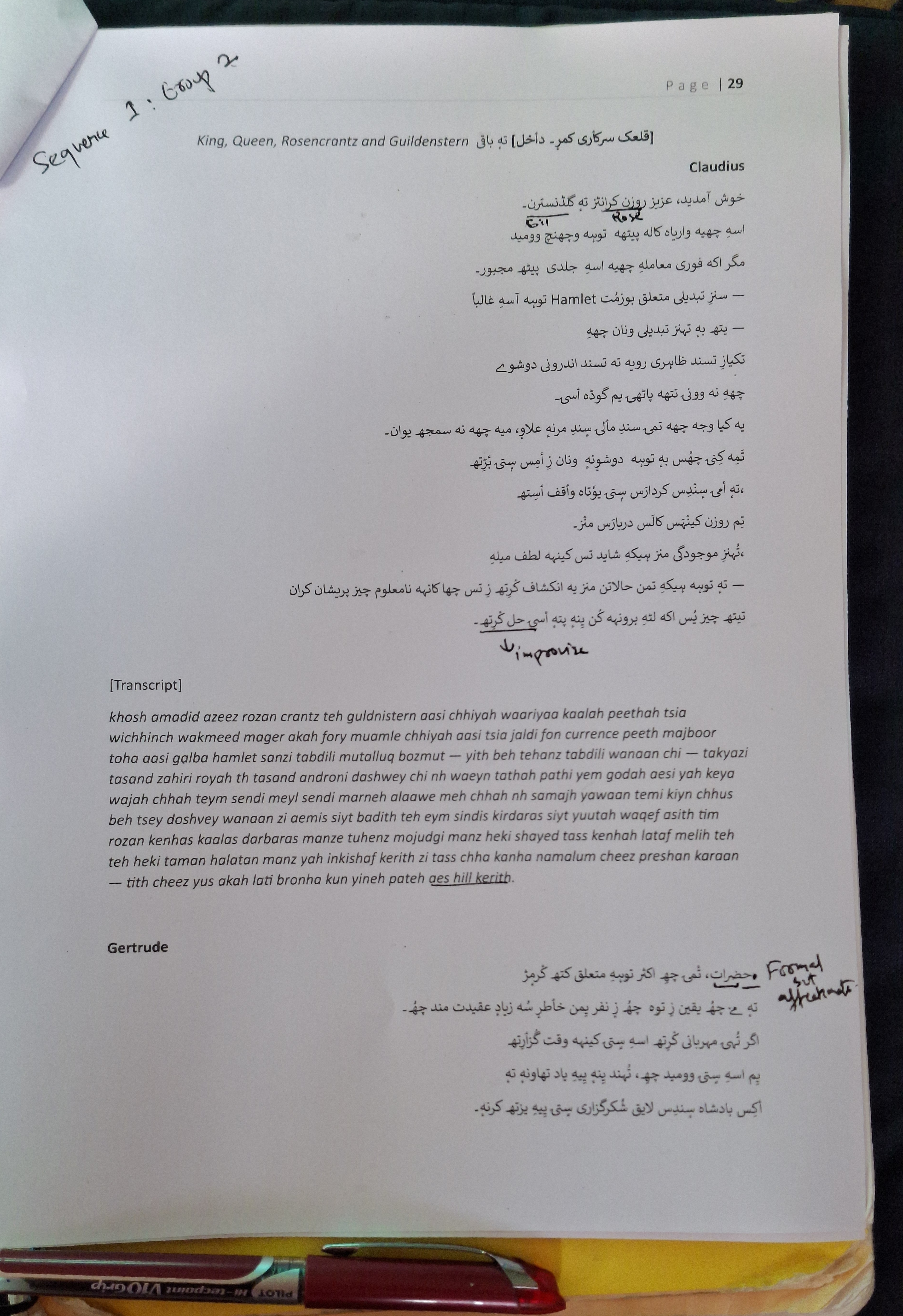myShakespeare is continuing to highlight teacher narratives to provide real-life classroom examples of how our tools and resources can change the way students experience Shakespeare. In a recent interview with myShakespeare user Adil Hussain, we learned how Adil is putting the site to use in both high school and college classrooms in India, and how it has shaped the way he teaches.
experience Shakespeare. In a recent interview with myShakespeare user Adil Hussain, we learned how Adil is putting the site to use in both high school and college classrooms in India, and how it has shaped the way he teaches.
Adil, a senior research fellow in the English department at the University of Kashmir, was excited to start leveraging myShakespeare’s multimedia approach when he first stumbled upon our site several years ago. He shared that he appreciates that myShakespeare enables him to customize his Shakespeare lessons to suit the needs of different ages and skill levels, by offering everything he needs to create that differentiation in one place. “I could use other resources, but it’s a big hassle for me,” he explained. “[Before myShakespeare], I had to open up a performance on YouTube, then go over the vocabulary. I had to tell students how these words are pronounced. Then I have to go to SparkNotes for a paraphrase of each line. I had to engage them in a different thesaurus so that they understand how different words can be translated. I had to have five or six tabs open at the same time—while engaging the students.” Now, Adil uses myShakespeare to provide all these tools to his students on one webpage. “And there are other functionalities like annotations and highlights in their notebooks,” he added. “So I share with them all those tricks that they can use myShakespeare for.”
With his younger students, Adil shared that he often came up against comprehension, engagement, and confidence issues when teaching Shakespeare due to tricky and archaic language. Since using myShakespeare, he has been able to provide multiple access points to the text in a way that generates those “aha!” moments every teacher strives for. “I project the whole scene,” he explained. “Then I have students read aloud while I hover over each word and the gloss definitions. I also have them listen to the pronunciation, which you can easily do on myShakespeare.”
In his professor role, Adil has been exploring performance activities in the classroom, asking students to learn lines and act out scenes for group projects. “We have this little informal theater,” he explained. “They basically need to know their lines and what the line means, as well as how you have to say a particular line. English is maybe their third language, not even their second. So myShakespeare helps a lot with that. You can [hear] where intonations go and where the stress falls.”
Most of Adil’s experience with myShakespeare has been with our edition of Hamlet. Describing his approach to the play before discovering our site, Adil shared, “I had this barrier…I couldn't make them understand what Hamlet means to a modern audience. But when I put on [myShakespeare’s] performances, they can connect to the recordings and the audio and then they feel the vibes. How Hamlet procrastinates, for example—that seeps into them through the use of different media, rather than just teaching them with the book.” Adil also strives to be culturally relevant in his teaching by connecting Shakespeare to modern Indian adaptations, such as the film Haider, which sets Hamlet amid the Kashmir conflicts of 1995.
 It may have been adaptations like these that first inspired Adil to try out a translation activity with his students that has them rewriting Shakespeare’s original text in their first language of Kashmiri. “We were very successful,” Adil said. “We were able to translate that first scene of the first act [of Hamlet], which was a humble attempt for us. But we were able to do that. We translated the whole section to Kashmiri. And then we performed it in Kashmiri as well! So this is where myShakespeare comes in. They are able to understand the poetic language and the vocabulary now. myShakespeare was really useful.”
It may have been adaptations like these that first inspired Adil to try out a translation activity with his students that has them rewriting Shakespeare’s original text in their first language of Kashmiri. “We were very successful,” Adil said. “We were able to translate that first scene of the first act [of Hamlet], which was a humble attempt for us. But we were able to do that. We translated the whole section to Kashmiri. And then we performed it in Kashmiri as well! So this is where myShakespeare comes in. They are able to understand the poetic language and the vocabulary now. myShakespeare was really useful.”
We discussed translation activities like the one Adil describes in a previous blog post on linguistic creativity, which highlights how taking ownership of the text in this way can be especially engaging for English language learners. myShakespeare’s digital notebook and annotation tools make it easy to filter, sort, and tag the text, providing ample support for student-led translation activities and performances like the ones happening in Adil’s classrooms.
We hope to hear from more teachers like Adil who are utilizing myShakespeare’s tools to engage their students and encourage critical thinking. If you have a story or lesson plan you’d like to share, write to us at info@myshakespeare.com for a chance to be featured in our next blog!










